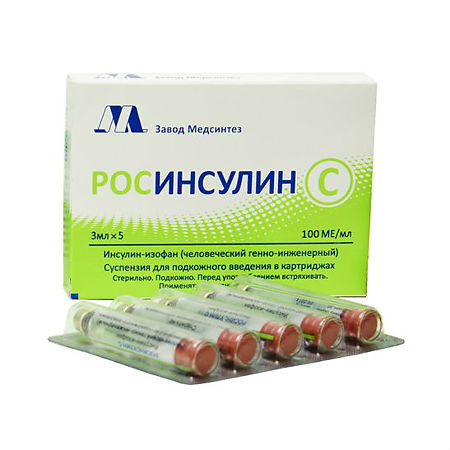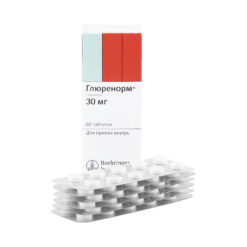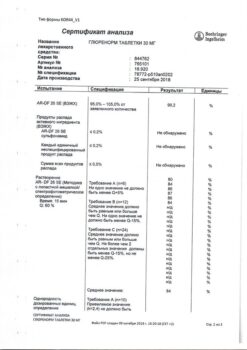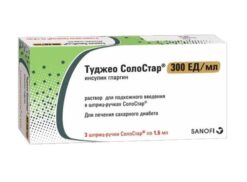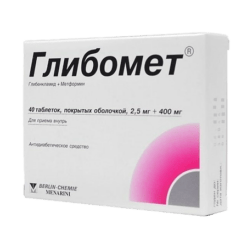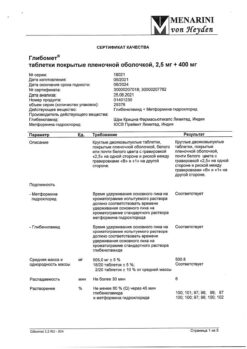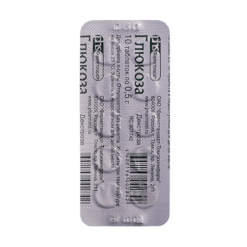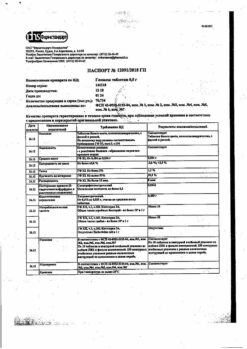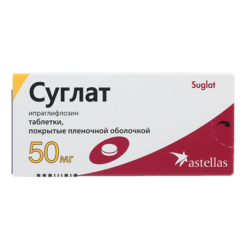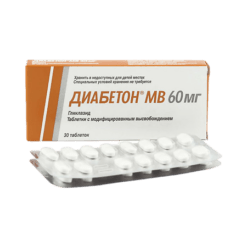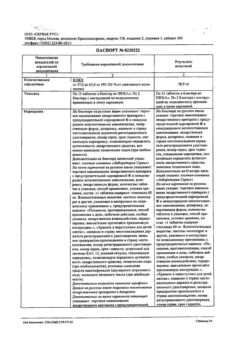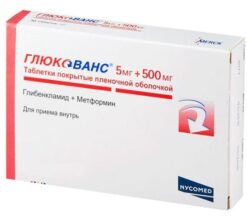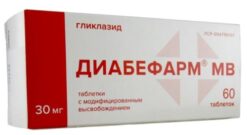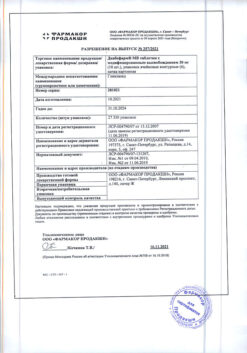No products in the cart.
Description
Rosinsulin C is human insulin produced using recombinant DNA technology. It is a medium-acting insulin preparation. It interacts with specific receptor of outer cytoplasmic cell membrane and forms insulin-receptor complex, which stimulates intracellular processes, including synthesis of several key enzymes (hexokinase, pyruvate kinase, glycogen synthetase and others).
Decrease of glucose content in blood is caused by increase of its intracellular transport, increase of absorption and assimilation by tissues, stimulation of lipogenesis and glycogenogenesis, decrease of glucose production by liver and others. The duration of action of insulin drugs is mainly due to the speed of absorption, which depends on several factors (e.g., the dose, route and place of administration), so the action profile of insulin is subject to significant variations, both in different people and in the same person.
The profile of action when injected subcutaneously (approximate figures): onset of action in 1-2 hours, maximum effect between 6 and 12 hours, duration of action 18-24 hours.
Indications
Indications
Diabetes mellitus.
Pharmacological effect
Pharmacological effect
Rosinsulin C is human insulin obtained using recombinant DNA technology. It is a medium-acting insulin preparation. It interacts with a specific receptor on the outer cytoplasmic membrane of cells and forms an insulin-receptor complex that stimulates intracellular processes, including the synthesis of a number of key enzymes (hexokinase, pyruvate kinase, glycogen synthetase, etc.).
The decrease in glucose content in the blood is due to an increase in its intracellular transport, increased absorption and assimilation by tissues, stimulation of lipogenesis, glycogenogenesis, a decrease in the rate of glucose production by the liver, etc. The duration of action of insulin preparations is mainly determined by the rate of absorption, which depends on several factors (for example, on the dose, route and place of administration), and therefore the profile of insulin action is subject to significant fluctuations, both in different people and in the same person.
Action profile for subcutaneous injection (approximate figures): onset of action after 1-2 hours, maximum effect between 6 and 12 hours, duration of action 18-24 hours.
Special instructions
Special instructions
Before each use, carefully check the appearance of the contents of the bottle and DO NOT USE Rosinsulin C if, after mixing, the suspension contains flakes or if white particles adhere to the bottom or walls of the bottle, creating a frosty pattern effect.
Do not use Rosinsulin S if, after shaking, the suspension does not become white and uniformly cloudy.
During insulin therapy, constant monitoring of blood glucose levels is necessary.
In addition to insulin overdose, the causes of hypoglycemia can be: drug replacement, skipping meals, vomiting, diarrhea, increased physical activity, diseases that reduce the need for insulin (impaired liver and kidney function, hypofunction of the adrenal cortex, pituitary gland or thyroid gland), change of injection site, as well as interactions with other drugs.
Incorrect dosing or interruptions in insulin administration, especially in patients with type I diabetes mellitus, can lead to hyperglycemia. Typically, the first symptoms of hyperglycemia develop gradually, over several hours or days. They include the appearance of thirst, increased urination, nausea, vomiting, dizziness, redness and dryness of the skin, dry mouth, loss of appetite, and the smell of acetone in the exhaled air. If left untreated, hyperglycemia in type 1 diabetes can lead to life-threatening diabetic ketoacidosis.
The dose of insulin must be adjusted in case of dysfunction of the thyroid gland, Addison’s disease, hypopituitarism, impaired liver and kidney function, and diabetes mellitus in people over 65 years of age.
Insulin dosage adjustments may also be necessary if the patient increases the intensity of physical activity or changes their usual diet.
Concomitant diseases, especially infections and conditions accompanied by fever, increase the need for insulin.
The transition from one type of insulin to another should be carried out under the control of blood glucose levels.
The drug reduces tolerance to alcohol.
Due to the possibility of precipitation in some catheters, the use of the drug in insulin pumps is not recommended.
Active ingredient
Active ingredient
Insulin-isophane human genetically engineered
Composition
Composition
For 1 ml:
Contraindications
Contraindications
– Increased individual sensitivity to insulin or any of the components of the drug;
– hypoglycemia.
Side Effects
Side Effects
Caused by the effect on carbohydrate metabolism: hypoglycemic conditions (pallor of the skin, increased sweating, palpitations, tremor, hunger, agitation, paresthesia in the mouth, headache). Severe hypoglycemia can lead to the development of hypoglycemic coma.
Allergic reactions: rarely – skin rash, Quincke’s edema; extremely rarely – anaphylactic shock.
Local reactions: hyperemia, swelling and itching at the injection site; with long-term use – lipodystrophy at the injection site.
Other: edema, transient refractive errors (usually at the beginning of therapy).
Interaction
Interaction
There are a number of medications that affect the need for insulin.
The hypoglycemic effect of insulin is enhanced by oral hypoglycemic drugs, monoamine oxidase inhibitors, angiotensin-converting enzyme inhibitors, carbonic anhydrase inhibitors, non-selective beta-blockers, bromocriptine, octreotide, sulfonamides, anabolic steroids, tetracyclines, clofibrate, ketoconazole, mebendazole, pyridoxine, theophylline, cyclophosphamide, fenfluramine, lithium preparations, preparations containing ethanol.
Overdose
Overdose
In case of overdose, hypoglycemia may develop.
Treatment: the patient can eliminate mild hypoglycemia himself by ingesting sugar or carbohydrate-rich foods. Therefore, patients with diabetes are recommended to constantly carry sugar, sweets, cookies or sweet fruit juice with them.
In severe cases, when the patient loses consciousness, it is administered intravenously
40% dextrose solution; intramuscularly, subcutaneously, intravenously – glucagon.
After regaining consciousness, the patient is advised to take food rich in
carbohydrates to prevent recurrence of hypoglycemia.
Storage conditions
Storage conditions
In a place protected from light at a temperature of 2 to 8 ° C. Avoid freezing.
Store the drug in use at room temperature 15-25 °C for no more than 28 days, protect from direct sunlight and heat.
Keep out of the reach of children.
Shelf life
Shelf life
3 years.
Do not use after expiration date.
Manufacturer
Manufacturer
Plant Medsintez LLC, Russia
Additional information
| Shelf life | 3 years. Do not use after the expiration date. |
|---|---|
| Conditions of storage | In a light-protected place at a temperature of 2 to 8 ° C. Do not allow freezing. When in use, store the drug at room temperature 15-25 °С for not more than 28 days, protect from direct sunlight and heating. Store out of reach of children. |
| Manufacturer | Medsintez plant, Russia |
| Medication form | suspension |
| Brand | Medsintez plant |
Related products
Buy Rosinsulin C, 100 me/ml suspension 3 ml cartridges 5 pcs with delivery to USA, UK, Europe and over 120 other countries.

